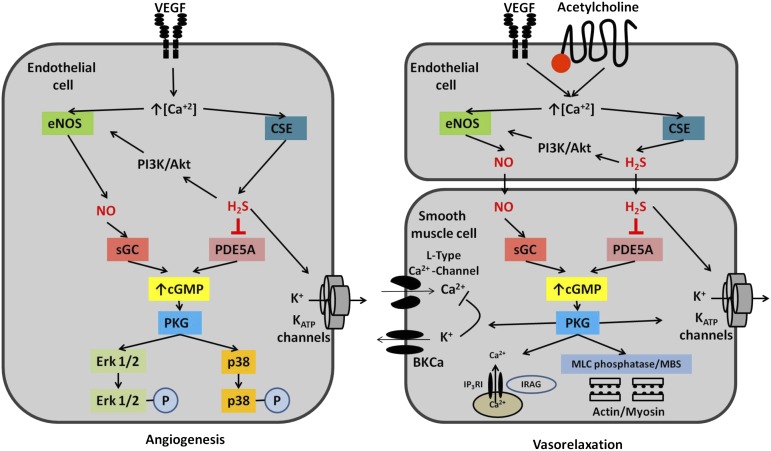Fig. 6.
Proposed pathways of H2S and NO interaction. Cooperation between NO and H2S in angiogenesis (Left) or endothelium-dependent vasorelaxation (Right). Binding of VEGF or acetylcholine to its receptor on the endothelial cell mobilizes intracellular calcium and activates eNOS as well as CSE (two calcium-dependent enzymes), resulting in a simultaneous elevation of intracellular NO and H2S levels in endothelial cells (in the context of angiogenesis) or in the smooth muscle cell (in the context of vasorelaxation). NO stimulates guanylyl cyclase, whereas endogenously produced H2S maintains a tonic inhibitory effect on PDE5, thereby delaying the degradation of cGMP and permitting physiological cGMP signaling. These two simultaneous actions ensure that cGMP has a sufficiently long half-life to activate PKG to stimulate PKG-dependent downstream signaling such as ERK1/2 and p38 in the case of angiogenesis and myosin light chain (MLC) phosphatase (via its myosin-binding subunit, MBS), large-conductance calcium- and voltage-activated potassium channels (BKCa), and IP3-R-–associated cG-kinase substrate (IRAG) in the case of smooth muscle relaxation. NO and H2S are also known to activate KATP channels, which are also involved in angiogenesis and endothelium-dependent relaxation.

